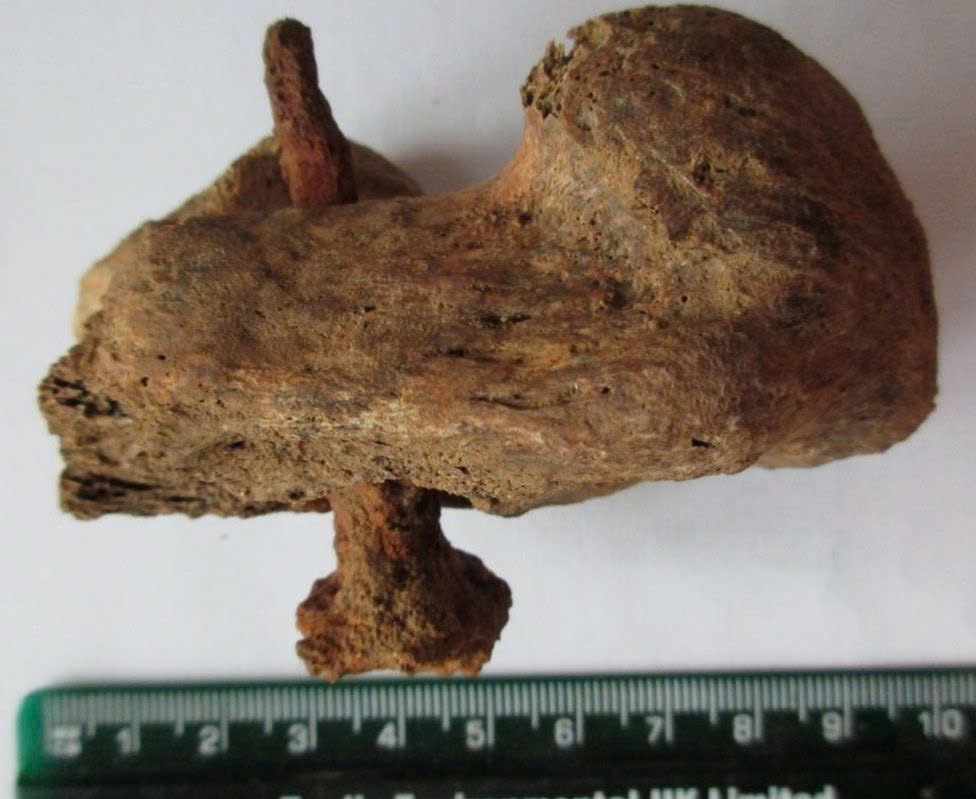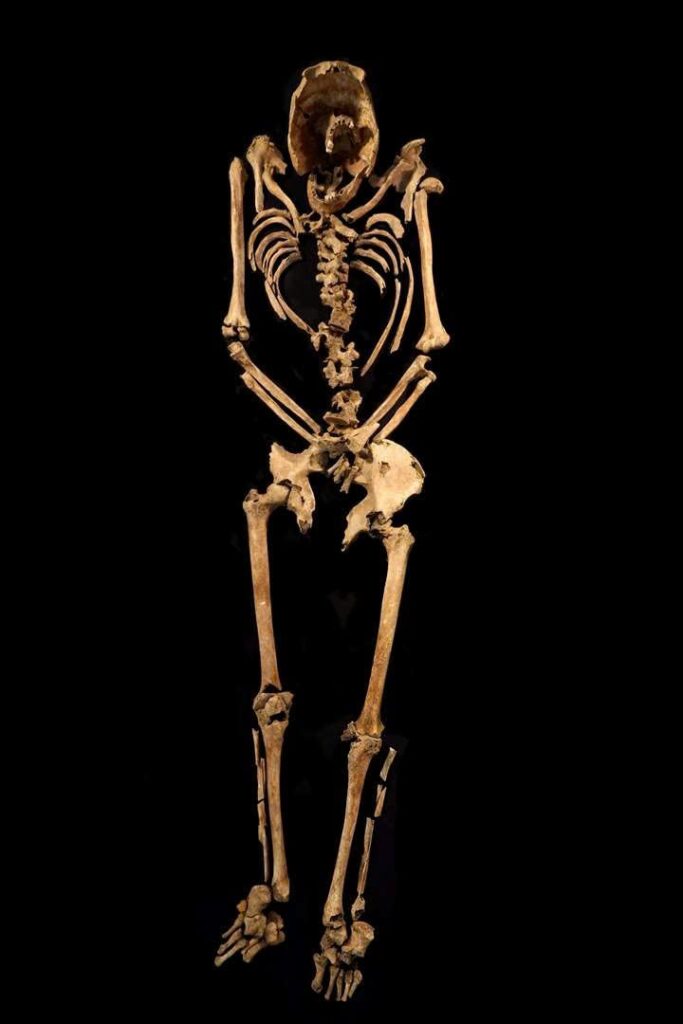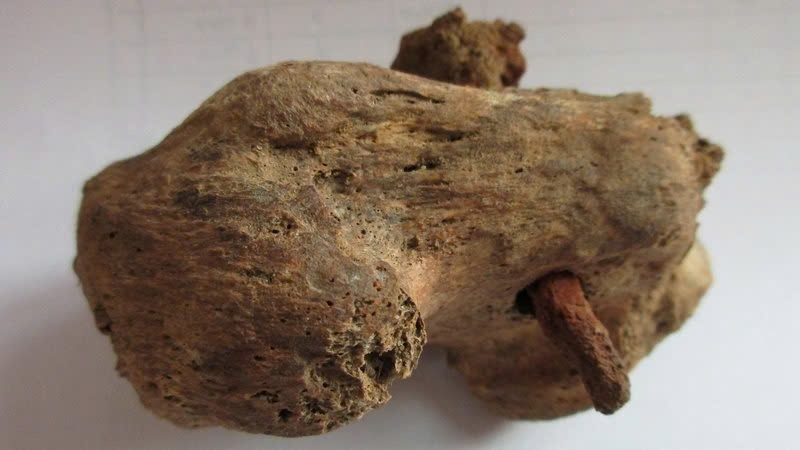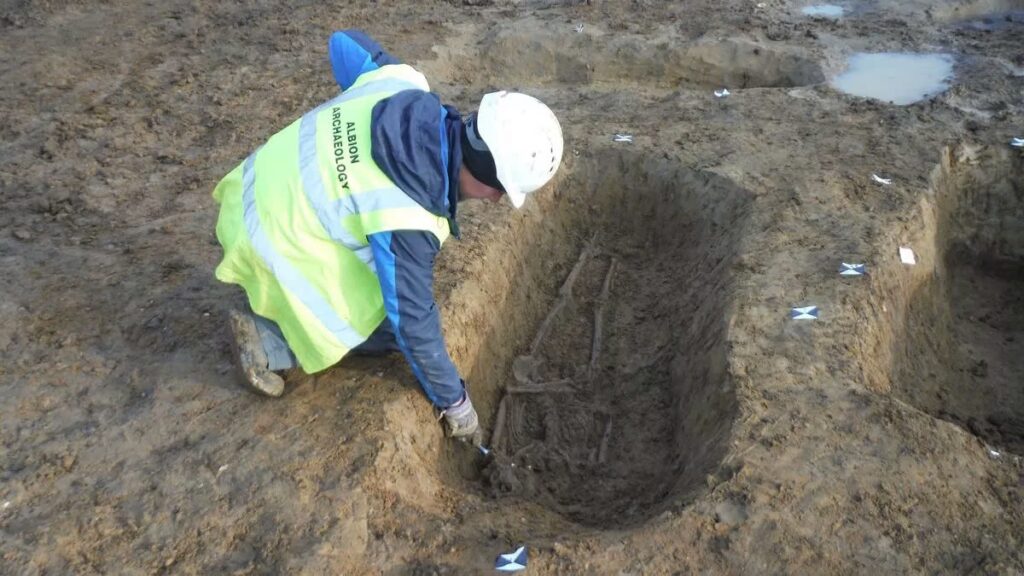A Remarkable Archaeological Find

In a groundbreaking discovery, archaeologists have uncovered the earliest evidence of a Roman crucifixion in the UK, located in a Cambridgeshire village. This significant find was made during excavations of a previously unknown Roman roadside settlement in Fenstanton, situated between Cambridge and Huntingdon, as part of preparations for a new housing development.
The Discovery Details

During the archaeological digs, which also revealed five small cemeteries, the remains of a man with a nail through his heel were found in one grave. This marks the first documented case of Roman crucifixion in the UK, with only one similar example known globally, discovered in Israel. Previous reports have indicated two other probable instances in Italy and Egypt, but the Fenstanton find is noted for its exceptional preservation.
Corinne Duhig, an osteologist from Wolfson College, Cambridge, remarked, “The fortunate combination of good preservation and the nail remaining in the bone has allowed me to examine this almost unique example when so many thousands have been lost. This shows that even small settlements at the edge of the empire could not escape Rome’s most barbaric punishment.”
Broader Context of Discoveries

The excavation, led by David Ingham of Albion Archaeology, was prompted by the housing project by Tilia Homes (formerly Kier Living) south of Cambridge Road. In total, the cemeteries revealed the remains of 40 adults and five children, with evidence of family groups among the burials. The Roman graves, now fully excavated, also contained several archaeologically significant artifacts.

The findings from this excavation will be formally published once the analysis of the site’s artifacts and evidence is completed. This discovery adds to the rich tapestry of historical finds in Cambridgeshire, following previous excavations that uncovered preserved Bronze Age buildings and various ancient settlements.

